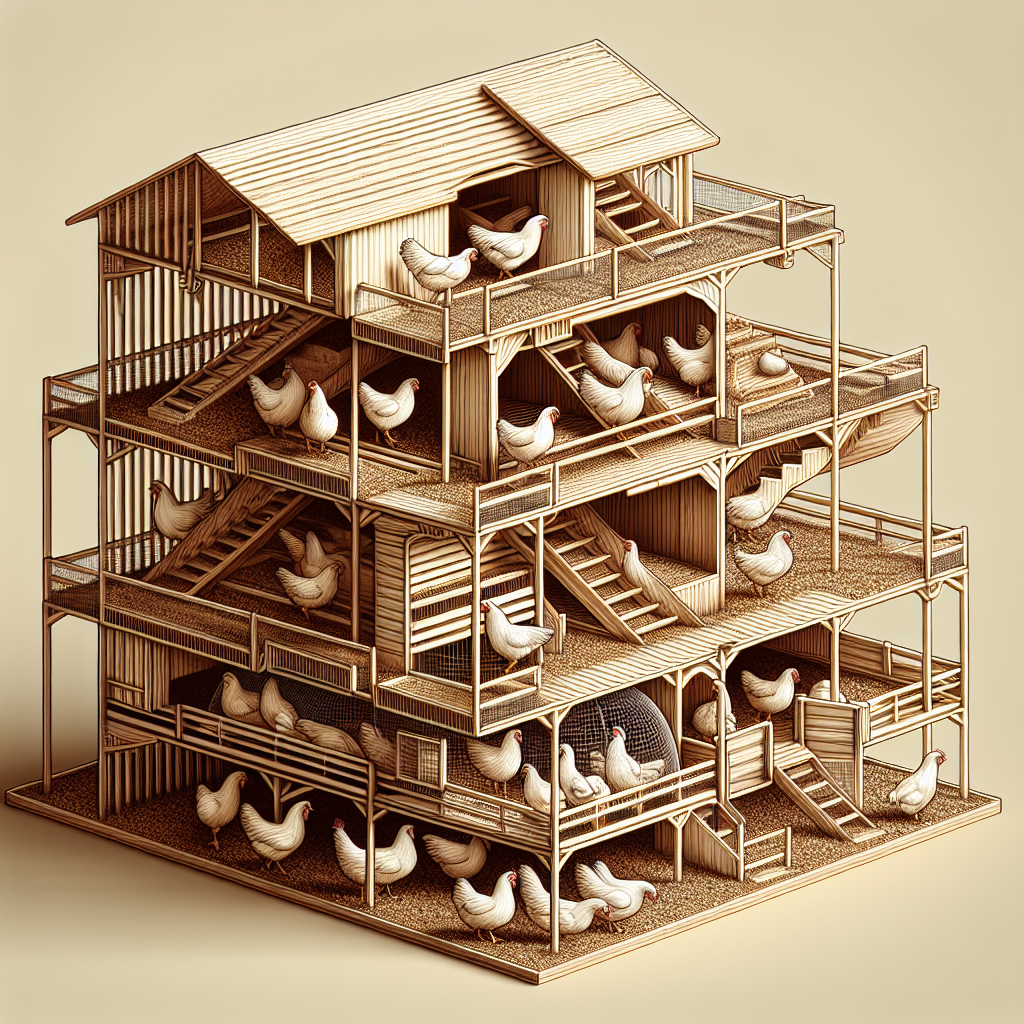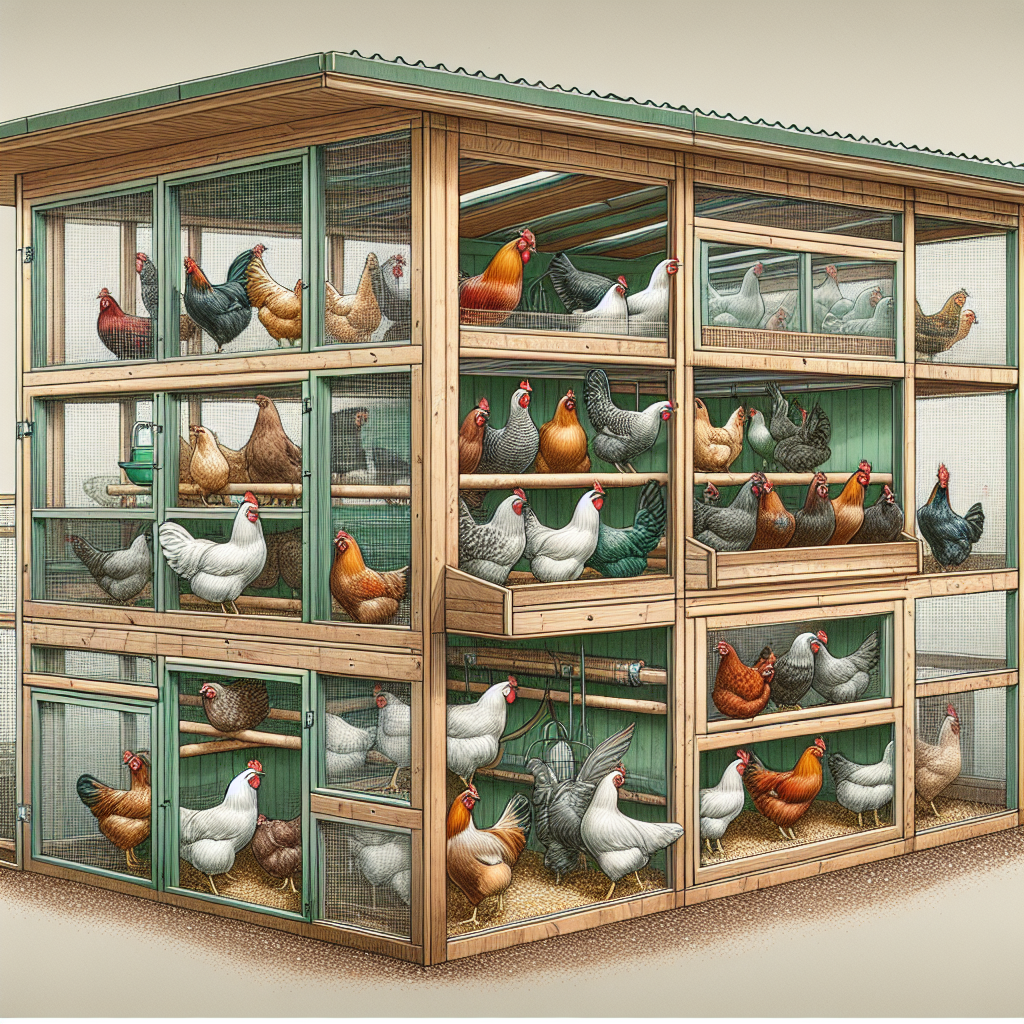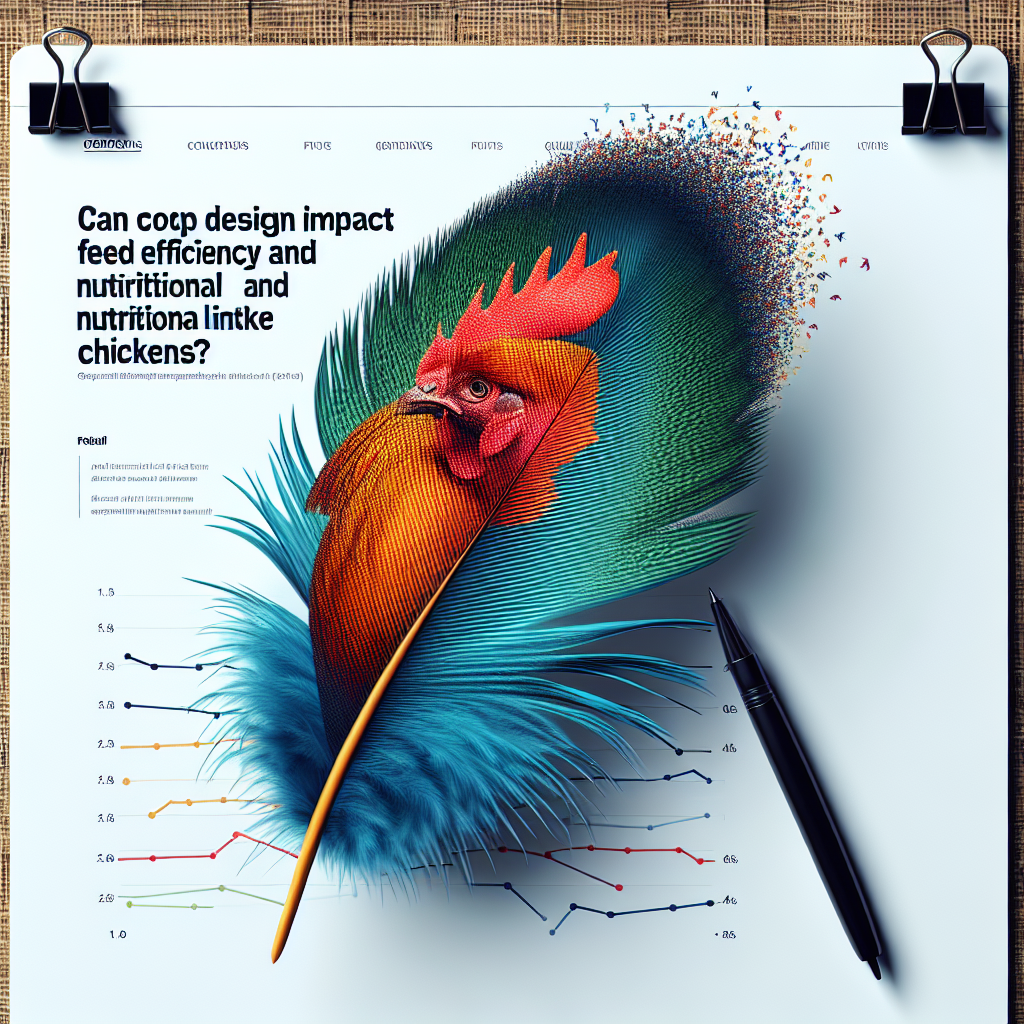Imagine walking into a chicken coop and being greeted by a bustling chorus of chirping chicks, content layers, and robust broilers. Each of these poultry, with their unique needs and requirements, rely on the thoughtfully designed coop to provide them with a comfortable and safe environment. But how exactly do coop designs cater to the distinct needs of chicks, layers, and broilers? Join us as we explore the fascinating world of coop designs and discover the secrets to keeping our feathered friends happy and healthy.
Importance of Coop Design
When it comes to raising poultry, the design of the coop plays a crucial role in ensuring the well-being and productivity of your birds. A well-designed coop not only provides a suitable living environment for the chickens, but also promotes their health and ease of management. Therefore, it is essential to give careful consideration to the specific needs of chicks, layers, and broilers when designing your coop.
Considerations for Chicks
Chicks require special attention and care, as they are more vulnerable in their early stages of life. Safety and security should be the topmost priority when designing a coop for chicks. The coop should be secure from predators, with strong fencing and secure doors. Additionally, regulating temperature and humidity is crucial for their survival. Providing a heat source, such as a heat lamp, as well as suitable bedding to keep them warm and comfortable are necessary considerations. Adequate space for growth is also important to prevent overcrowding and ensure that each chick has enough room to move around freely. Access to feed and water should be made easy, with low-height feeders and waterers that are easily accessible to the chicks.
Needs of Layers
For laying hens, coop design should focus on providing them with the necessary facilities for nesting and egg-laying. Nesting boxes with comfortable, soft bedding materials should be provided to encourage natural behavior and ensure the safety and cleanliness of the eggs. Perches for roosting should also be included, as chickens naturally seek elevated spots to rest during the night. Layers require sufficient walking space to move around and engage in their natural behaviors. Good ventilation and fresh air circulation are essential to maintain air quality and prevent the buildup of ammonia fumes that can be harmful to the birds. Feeder and waterer placement should be easily accessible to the layers to ensure they have a constant supply of food and water.
Accommodating Broilers
Broilers, which are raised for meat production, have different needs compared to chicks and layers. Coop design for broilers should focus on flooring and litter management to ensure proper waste management and prevent health issues. Proper lighting conditions are crucial for broilers to maintain their health and growth. Ample feeding and drinking space should be provided to avoid competition and ensure efficient feeding. Temperature control is of utmost importance for broilers to maintain their comfort and avoid heat stress. Comfortable resting areas should also be included to allow broilers to rest and relax.
Coop Design Factors
When designing a coop, there are several factors that need to be considered to ensure the well-being and productivity of the chickens.
Size and layout
The size of the coop should be appropriate to accommodate the number of birds you plan to keep. It should provide enough space for the chickens to move around comfortably, without being overcrowded. The layout should be well-planned to optimize the use of space and provide easy access to different areas of the coop.
Ventilation and air quality
Good ventilation is essential to maintain fresh air and prevent the buildup of ammonia and harmful gases within the coop. Proper airflow helps to regulate temperature and humidity, especially during hot and humid weather conditions. Adjustable vents and windows can be installed to control airflow and ensure optimal air quality.
Insulation and temperature control
Insulating the coop helps to regulate temperature, keeping it warm during colder months and cool during hotter months. Adequate insulation not only provides comfort to the chickens but also helps to reduce energy costs. In addition to insulation, proper temperature control mechanisms, such as fans or heaters, may be required depending on the climate conditions.
Lighting and photoperiod
Lighting plays a crucial role in the overall health and productivity of chickens. Coop design should incorporate natural light as much as possible, with windows or skylights that allow for sunlight to enter the coop. In addition, supplemental lighting can be used to regulate the day and night cycles, promote egg production, and reduce stress and aggressive behaviors.
Nesting boxes and perches
For layers, nesting boxes should be provided with comfortable bedding materials to promote natural behavior and ensure the safety and cleanliness of the eggs. Perches should also be included to allow chickens to roost and rest during the night.
Feeder and drinker placement
Feeder and drinker placement should be easily accessible to the chickens, ensuring that they have a constant supply of feed and water. Multiple access points can help prevent overcrowding and competition for food and water.
Flooring and litter choices
The choice of flooring and litter materials is important for hygiene and waste management. Suitable flooring materials should be easy to clean and sanitize, while litter materials should provide comfort, absorb moisture, and minimize odors.
Security and predator protection
Protecting the chickens from predators is crucial. Coop design should include strong fencing, secure doors, and measures to prevent escapes or intrusions from predators. Additional measures like predator-proof wiring and reinforced flooring can be taken to ensure the safety and security of the birds.
Ease of cleaning and maintenance
Regular cleaning and maintenance of the coop are necessary for the health and hygiene of the chickens. Coop design should make it easy to access and clean all areas of the coop, with removable or easily accessible bedding and waste management systems.
Accessibility and ergonomic design
Consideration should be given to the ease of access for the caregivers. Coop design should be ergonomic, allowing for easy entry, feeding, cleaning, and monitoring of the chickens. This includes designing doorways, ramps, and coop features at appropriate heights and sizes for ease of use.
Importance of Safety
Safety should always be the top priority when designing a coop. Preventing escapes is essential to ensure that the chickens remain within the designated area and are protected from potential dangers outside. Strong and secure fencing, along with well-designed doors and locks, help in preventing escapes and securing the coop. In addition, protecting against predators is crucial to prevent harm or loss of the chickens. Proper fencing, reinforced flooring, and wire mesh can help safeguard the birds from predators such as foxes, raccoons, or birds of prey. Lastly, coop design should also consider avoiding injuries or entanglements by avoiding sharp edges, ensuring smooth surfaces, and eliminating any potential hazards within the coop.
Managing Temperature and Humidity
Temperature and humidity control are important factors in maintaining the health and well-being of the chickens. Coop design should include adjustable ventilation options to control airflow and temperature. Insulation and draft control systems help regulate temperature during different seasons. In extreme weather conditions, heating or cooling mechanisms may be required to provide optimal comfort for the chickens. Additionally, monitoring humidity levels and providing suitable bedding or litter materials help maintain appropriate moisture levels within the coop.
Ensuring Sufficient Feeding and Watering
Adequate feeding and watering are essential for the health and productivity of the chickens. Coop design should consider choosing suitable feeder types that prevent feed wastage or contamination. Multiple access points should be provided to prevent overcrowding and allow all chickens to access feed and water easily. Regular cleaning and maintenance of feeders and waterers should be practiced to ensure a clean and safe food and water supply for the chickens.
Promoting Natural Behavior
Coop design should facilitate and encourage natural behavior in chickens. Creating comfortable resting areas with suitable bedding materials allows chickens to rest and relax. The inclusion of perches and roosting spaces provides opportunities for chickens to engage in their natural instincts. Nesting facilities with soft bedding encourage chickens to lay eggs in a safe and comfortable environment. Additionally, providing areas for dust-bathing allows chickens to maintain their feather health and natural behaviors.
The Role of Lighting
Lighting plays a crucial role in the behavior and productivity of chickens. Coop design should take into account the regulation of day and night cycles through natural and supplemental lighting. Natural light should be maximized, while supplemental lighting can be used to ensure consistent and appropriate photoperiods for the chickens. Proper lighting helps to promote egg production, regulate molting cycles, reduce stress, and minimize aggressive behaviors among the flock.
In conclusion, coop design plays a vital role in accommodating the specific needs of chicks, layers, and broilers. It is important to consider factors such as safety, temperature and humidity control, feeding and watering, natural behaviors, lighting, and overall ease of management. By addressing these considerations, you can create a coop that provides a comfortable and functional living environment for your chickens, ensuring their health, well-being, and productivity.




